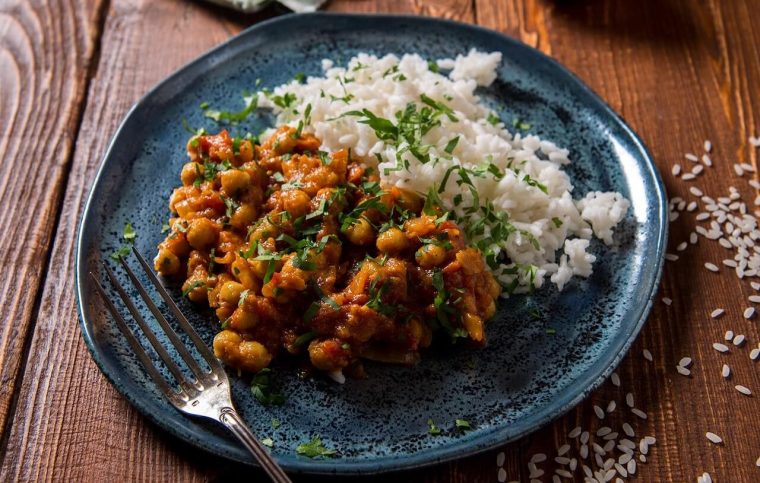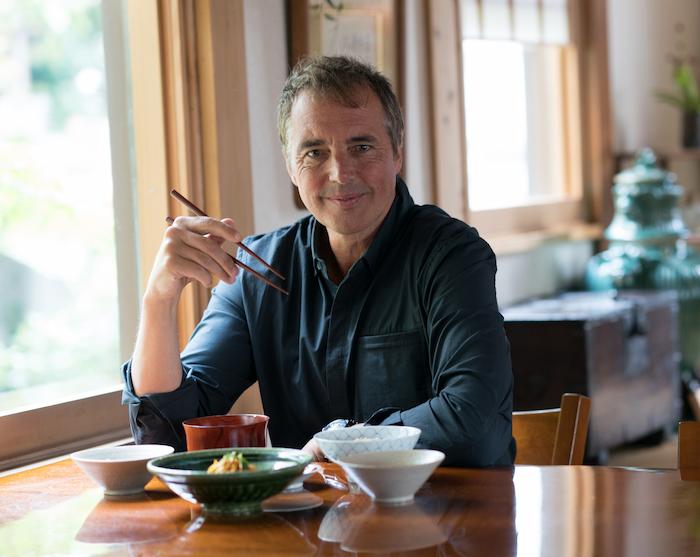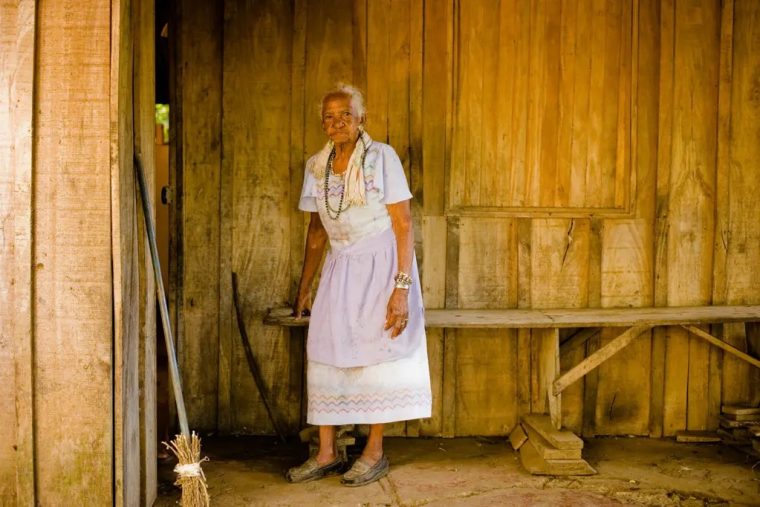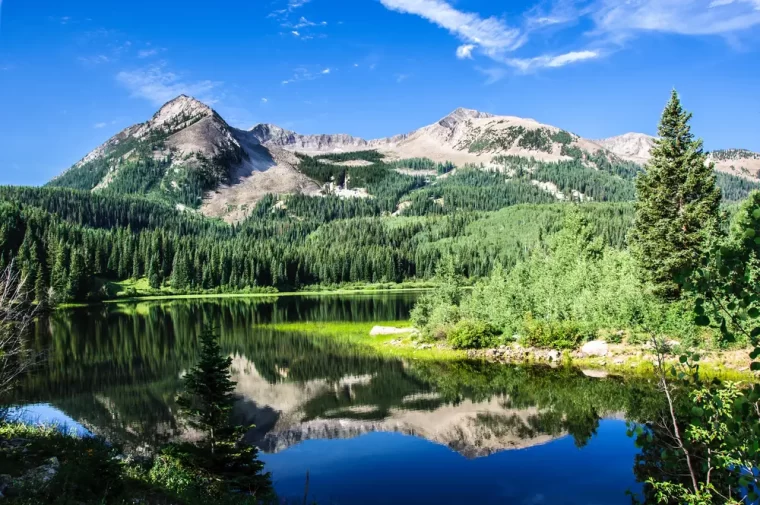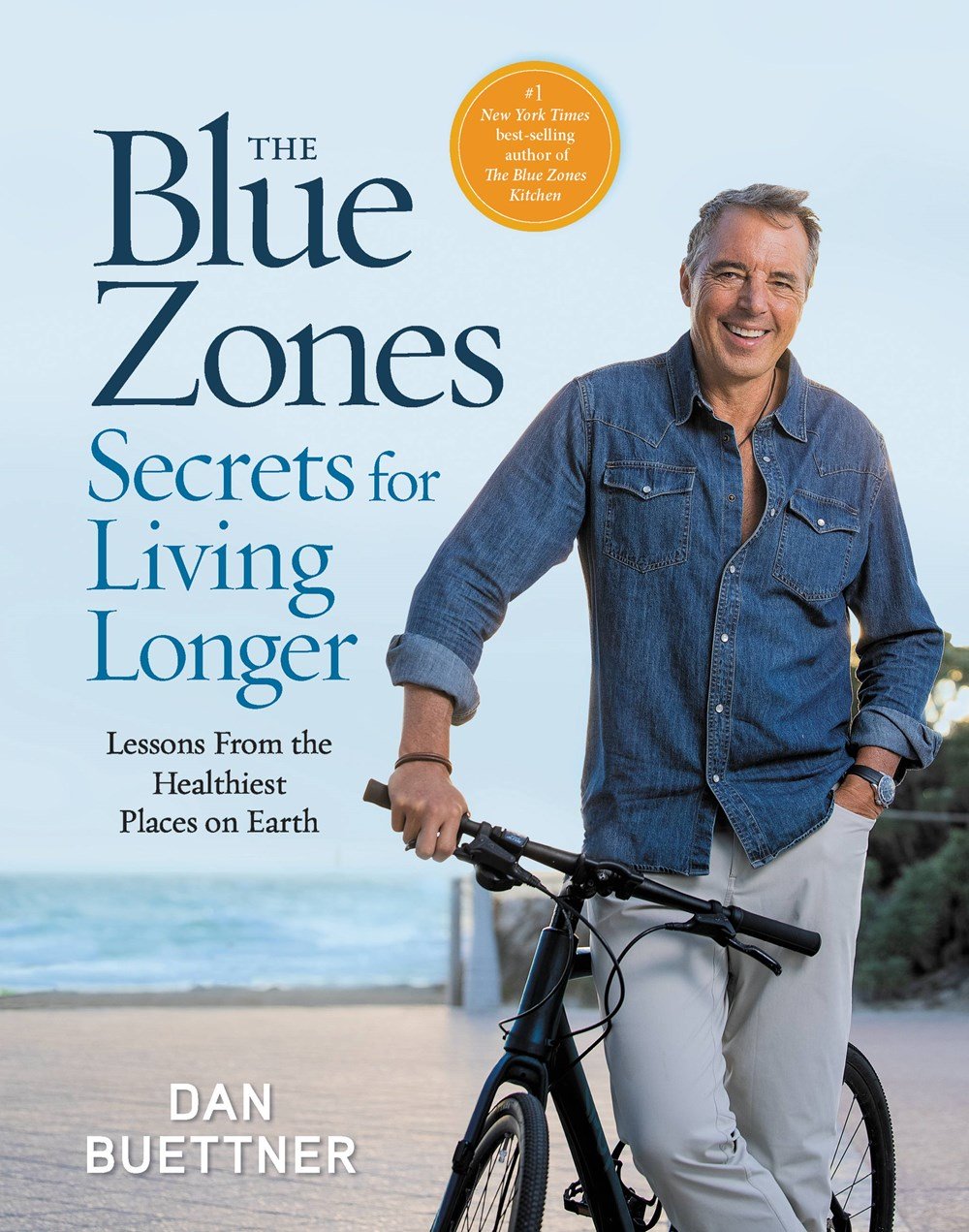It’s funny to me how some of humankind’s best innovations happen by accident.
The friction match (portable, on-demand fire!) happened when John Walker tried to scrape a dried bit of experimental compound off the end of his wooden stirring stick. To his surprise, the end of the stick caught fire… and he realized that it would be useful to be able to repeat this accident in the future.
Penicillin happened when Alexander Fleming left out a petri dish of bacteria over summer holiday and it became contaminated with bacteria-killing mold. Again, Fleming realized the potential usefulness of this accident and began focusing on the mold instead.
I use the vague word happened because, as these two examples illustrate, the line between invention and discovery can get blurry. You can debate whether to call each one an “invention” or a “discovery,” but the bigger point is that they came about because someone saw something useful and took action. That’s innovation in a nutshell.
These are easier, more palatable examples of innovation because there’s a clear moment of inspiration in both cases: Walker accidentally striking the first match, and Fleming looking at the petri dish and seeing the raw essence of (what we now call) antibiotics in front of him. These examples are also “easy” in the sense that someone else did the hard work for us; all we have to do to benefit from those innovations is buy them at the drugstore.
But some innovations are “harder.” Sometimes, useful information takes hundreds or even thousands of years to surface, and without a clear aha! moment announcing its arrival. Sometimes, useful information still requires us to do the hard work ourselves before we see any benefit—like a treasure map instead of a treasure chest.
Alas, a lot of good health information fits both of those criteria. But it’s still information worth sharing!
Today’s two main articles cover very different topics—elder care and sweet potatoes—but at root, they’re both about health revelations that took hundreds or even thousands of years to become plainly visible, and which people still need to experience for themselves to fully understand. Full stories down below!

We’ve entered the final quarter of the year… and though it’s the most wonderful time of the year, it’s also one of the busiest. If we’re thinking about health and lifestyle changes, we’re particularly likely to kick that can down the road, knowing that New Year’s and its resolutions are right around the corner.
I can appreciate that. For whatever reasons, people really do feel an opportunity to change when a new year begins, and I understand wanting to wait for that feeling before getting started (especially because it’s also a busy season).
But do you want to know why I think most New Year’s resolutions fail? Two words: starting cold. People are comforted by the idea that they don’t have to start until next year, but then they start with zero momentum and they never make it over the first hump.
I think a lot more New Year’s resolutions (particularly health-related resolutions) would succeed with one small and non-intuitive change: a guided orientation period before it all starts. Imagine that, instead of plunging yourself straight into the deep end, you could start your journey with some expert perspective—not just what to do and how to succeed, but how to enjoy what you’re doing and understand it from the inside out.
In simpler terms, people need a running start. And that’s why I created the 7-Day Longevity Reset.
The Reset is a lightweight one-week course designed to help you build a nutritional foundation for the rest of your life. More than anything else, it’s about the environments that sustain the world’s longest-lived people (particularly the environments built around food) and how you can design and maintain them for your own long-term benefit.
The 7-Day Longevity Reset is just $11 and it’s open for the taking all year round (and buyers get lifetime access), but it’s a particularly good primer for anyone pondering a health-related New Year’s resolution. If you want to give yourself a running start in 2024, now’s a perfect time to consider it!

I want to tell you a story from the village of Gairo Vecchio in the rocky highlands of Sardinia.

I’ve not found a canonical version of this story—details vary slightly between tellings—and I’m also not 100% sure if the story has an official name. Hopefully I’m close enough when I call it the Legend of Sa Babaieca.
According to the legend, it was a long tradition in highland Sardinia that, when elders reached their Biblical life expectancy*, they would be discarded so as not to burden the rest of the community.
*Biblical life expectancy is 70 years according to Psalm 90:10, and this idea has trickled down through literature and culture. For instance, the very first words of Inferno (“Midway upon the journey of our life, I found myself within a forest dark”) are Dante’s clever way of telling us that he’s 35, he’s Catholic, and he’s about to have one hell of a midlife crisis. Pun intended.
To be specific: the elder would take a hallucinogenic euphoriant (probably some form of salvia), their oldest son would walk them to a cliff’s edge, and then the elder would toss themselves (or be tossed) to their death on the rocks below. That site was called Sa Babaieca, and it might have looked something like this:
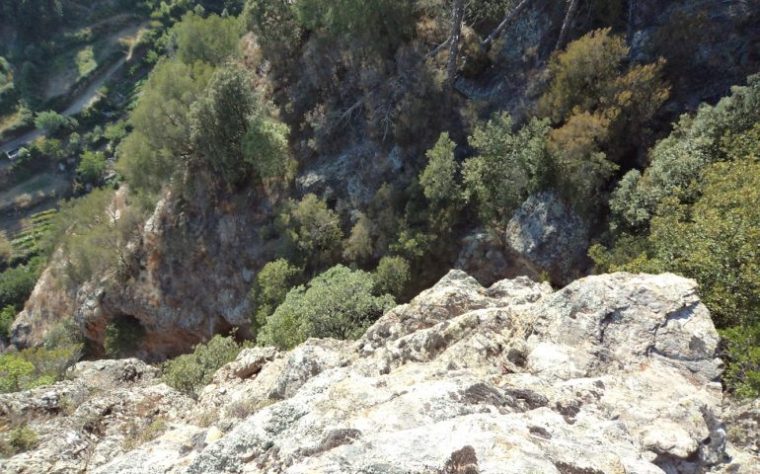
To pause the story for a minute…
Thinking about such a practice nowadays, the word “barbaric” comes to mind. You might also think of ancient Sparta, where unhealthy babies were abandoned for similar reasons. It turns out that those comparisons are surprisingly apt for getting to the roots of this Sardinian legend.
Sardinia was colonized about 13,000 years ago, and it’s seen quite a few invasions since then. The rocky, highland region in the center of Sardinia is actually called Barbagia (“land of the barbarians”) because, by the time Cicero named it that, its people had learned to defend themselves fiercely. The Romans were far from the first—or last—people to try the Sardinians.
This is to say that, for the longest time (thousands of years), it was part of Sardinian culture to know that their collective strength was not just a virtue, but a matter of survival. They didn’t get the grim idea of Sa Babaieca from any hatred against their elders, but (more likely) from a deeply seated, existential fear of weakness.
Still, stories happen when things don’t go according to plan, and the same is true with the Legend of Sa Babaieca. So here’s the rest of the story…
One day, a man was leading his 70-year-old father to Sa Babaieca when he decided—after a brief exchange, in many tellings—not to go through with it, to keep his father alive and hidden from the rest of the community. The exact nature of that exchange varies by telling, but it usually establishes (at the very least) that the father is still clear-headed.
Around this same time, the community’s farms were struggling; due to a dry spell, they didn’t have the seeds they needed to plant their next crops. The son came to his father in despair, thinking they wouldn’t have food to harvest the following season, but his father shrewdly told him that there are always some seeds hidden in the haystack. Sure enough, the son was able to scrape together enough seeds, and his harvest was considerably bigger than all of his neighbors’.
And so it goes from then on: the son becomes the richest man in the village thanks, in large part, to his father’s advice. In most tellings, the community does find out about the son’s transgression (keeping his father alive in violation of tradition), but they accept it when the son gives his father due credit for the role he’s played in their recent successes—when the community can see for themselves that the wisdom of age more than compensates for its weakness.
On one level, this is just a parable; it’s a little story that teaches a lesson. But the remarkable thing, to me, is where the parable comes from. If anyone has historically had reason to think about culling their weak, it’s Sardinia—and yet there’s a Sardinian parable for explaining why you should slow down and take care of your elders when their strength fails them, even to the point of housing them yourself.
Despite our relative peace and prosperity, we don’t seem to have much of this attitude nowadays, particularly not in America. We expect our elders to live independently for as long as humanly possible and then, when that’s no longer possible, we’re far more likely to put them in nursing homes than to house them and take care of them ourselves.
I don’t mean to chastise anyone and, in a moment, I’ll acknowledge a small fraction of what’s complicated about housing your elders in this day and age. My point for today is simply that we’re missing out on some longevity-boosting benefits when we put our elders in nursing homes—and not just benefits to their longevity, but to ours as well!
Now, I do understand that…
- Sometimes, the “costs” of housing an elder are simply too much to bear. This might mean dollars and cents, but it might also mean a simple lack of space or an inability to care for them in the ways that they need (or a dozen other things).
- Not everyone has good relationships with their elders—particularly not when you include in-laws—and per the above, housing them might be too great a cost for some people. It’s not selfish to want to keep your sanity… you can’t help anyone without it!
- Blind respect and deference to one’s elders (emphasis on blind) is an outmoded idea, and in many ways an unhealthy one. There’s a limit to what you can possibly “owe” them, if you owe them anything at all, and that’s ultimately for you to decide.
Having said that, here are three big ways that housing your elders (as opposed to putting them in nursing homes) can do good for all parties involved:
1️⃣ It prevents a sharp drop in that elder’s life expectancy. Statistically speaking, checking into a nursing home or equivalent facility chops 2-6 years off of a person’s life expectancy. Mind you, that figure is an average and a range—clearly some people fare better than others—but it’s still a pretty dire statistic any way you slice it.
2️⃣ It also counteracts the decline of cognitive function. Living with family is often a big factor in elders’ ability to stay lucid and mentally sharp. True, some folks go to nursing homes after they’ve developed dementia, but others develop dementia largely because they’re in a nursing home—a separate and unnatural environment without much connection to their extant social network.
3️⃣ Per the parable, there’s benefit to younger generations when elders are around. This doesn’t just extend to the generic “wisdom and advice” which, if we’re being honest, sometimes helps and sometimes doesn’t.
It also extends to a phenomenon called the Grandmother Effect, whereby children who have a grandparent in the house have lower rates of disease and mortality. There are a number of non-exclusive explanations for this, but as one example, children under the Grandmother Effect tend to have healthier eating habits—both what they eat (more fruits and veggies) and when/how they eat (less snacking and binging).
In short, keeping your elders around can actually do a lot to help you and—even more so—your children to live healthier and thereby longer lives! So if we can’t house our elders ourselves, we should at least try not to throw them off of any cliffs (literal or figurative).

Now let’s talk sweet potatoes, and let’s start with two important clarifications:
?️ Sweet potatoes and common potatoes are more distant of relatives than you might expect, given their similarities. They’re distant enough that some members of the scientific and agricultural communities have pushed, with little success, for “sweet potato” to be combined into one word (‘sweetpotato’) so that it’s not as easily mistaken for a close relative of the common potato.
?️ For today’s purposes, what most of us call “yams” are the same thing as “sweet potatoes.” True yams are actually a distinct species from sweet potatoes (and, again, not that close of a relative), but to the extent that a lot of you think “sweet potato” when you say “yam,” that’s perfectly fine for today.

Sweet potatoes are one of many crops that spread around the world one jump at a time. They’re originally native to Central and South America, but jumped to Polynesia via pre-Western exploration, then to Europe by way of Christopher Columbus, then to many other parts of the world from there.
The Portuguese introduced the sweet potato to Japan in the early 1600s, and it wound up becoming an important food in the Japanese food supply—particularly in times when rice harvests were struggling and in regions like Okinawa where rice is harder to grow in the first place. Fortunately for the Okinawans, they have a better climate for growing sweet potatoes than the rest of Japan; the plants like it warm, and Okinawa is closer to the equator.
It turns out, too, that sweet potatoes are something of a miracle food, and a big reason that Okinawa is one of the five original blue zones. For the longest time, their purple variant of sweet potato (which they call imo) is most of what Okinawans ate—as in, most of their calories came from this one crop—and despite eating what is technically a high-carb diet, these folks became some of the healthiest and longest-lived in the world!
So what’s so great about sweet potatoes?
First of all, they’re delicious and easy to like in many of the same ways as common potatoes. If you’ve ever enjoyed something made from common potatoes (and who hasn’t?), there’s an excellent chance you’ll be able to enjoy sweet potatoes—especially because you can make many of the same foods from either kind of potato.
Now a few points about the nutritional value of sweet potatoes:
- They have some calories, but not as many as you might think (220 calories per cup). Their energy density is fairly low and their nutrient density is fairly high—both good things.
- They have a good amount of fiber (5g per cup), which helps digestion and helps you to feel more full and satisfied than the calorie count would suggest.
- They’re loaded with potassium (700mg per cup), so they’re surprisingly helpful against cramps (that’s almost double the potassium of a banana!), not to mention high blood pressure.
- They’re a great source of vitamin A (one cup gives you 500% of your daily needs). They’re also a good source of vitamins C and E, plus B vitamins like B6, folate, thiamin, and riboflavin.
Feel free to Google some sweet-potato recipes, of course, but here’s one of my favorites if you want to try it:

Spiced Chickpeas & Sweet Potatoes with Brown Rice
Ingredients
1½ cups frozen brown rice
2 sweet potatoes
3 cloves of garlic
1 tbsp fresh ginger
1 can no-salt canned chickpeas
½ tsp cinnamon
2 tsps cumin
4 cups baby kale
½ tsp turmeric
Salt & pepper, to taste (optional)*
The Method
- Reheat the frozen brown rice according to the directions on the package.
- Produce Prep: Wash and chop the sweet potatoes (see step #3 for sweet potato preparation options). Peel and mince the garlic and fresh ginger. Rinse and drain the canned chickpeas.
- The sweet potatoes can be prepared two ways. If you have extra time, you can bake them in the oven. Cut the sweet potatoes into 1/2-inch-wide round medallions and bake them at 400 for 25-30 minutes, flipping at around 15 minutes. If you’re looking for an option that takes less than 10 minutes, you’ll be preparing mashed sweet potatoes in the microwave. Poke holes all over the sweet potato with a fork. Microwave for about 5-9 minutes or until soft throughout. (Larger sweet potatoes may take up to twice as long to cook.) Once cooked, mash the sweet potatoes with a fork.
- In a saucepan, heat the beans on medium heat with the cinnamon, cumin, turmeric, garlic, fresh ginger and a few tablespoons of water until the beans are warm and soft.
- Add the baby kale (or any other leafy greens) to the pan, and put the lid on to lightly steam the baby kale leaves. The baby kale is done when the leaves are limp (at about 3 minutes). Stir occassionally. Mash the sweet potatoes in a bowl. Add them to the beans and baby kale mix.
- To plate, top the brown rice with the veggie and chickpea mixture. Season to taste.
- Kid-Friendly Tip: This recipe is pretty heavy on the spices. Just enjoying beans, baby kale, and sweet potatoes with light seasoning is probably the most successful way to make sure your “small appetite” loves this meal!
*Notes: Black pepper in combination with turmeric improves the bioavailability of the antioxidant curcumin.
